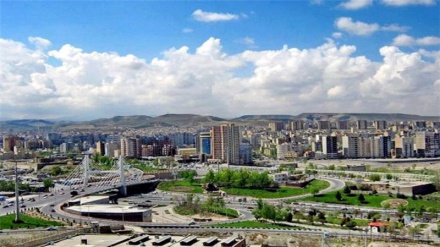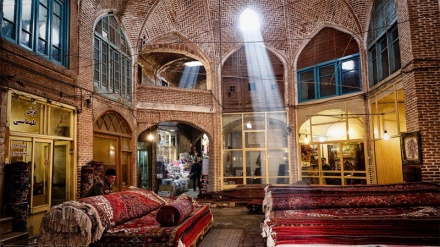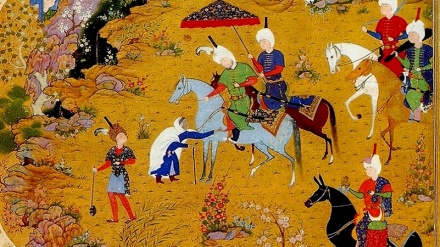Tabriz, 2018 (9)
Welcome to this week's episode of the series "Tabriz, 2018". Today, we introduce the nomads of East Azarbaijan Province.
Northwestern Iran is comprised of East and West Azarbaijan Provinces, Ardebil, and a part of Gilan Province. Meanwhile, given that this is a mountainous region, it maintains a diverse climate. The region is covered with forested regions, and vast ever-green meadows, which has led to the residence of nomads in this land. The provincial nomads pass across the provincial frontiers throughout the warm and cold seasons, taking their livestock for grazing in appropriate regions. East Azarbaijan Province, which maintains a diverse climate, and is covered with meadows, ever-green forests, in addition to highlands, is one of the provinces which nomads reside in.
Selection of the city of Tabriz as the tourism capital of the Islamic world, and implementation of several tourism projects, revolving round nomads, in this city has turned this town into a tourism hub, so that the travelers who are destined to this city would be able to personally experience nomadic life. Every year, tens of thousands of the people of this province, and other cities of Iran visit this tourist destination to closely witness and take part in a cultural and athletic festivity which is held in a nearby town, while enjoying the scenic landscape of the region.
There are two main nomadic groups in East Azarbaijan Province, which are namely Shahsavan and Arasbaran Nomads, in addition to ten other independent nomadic tribes. In the meantime, every year in the summer season, East Azarbaijan Province is host to nomads who head toward this province from Ardebil, Zanjan, and West Azarbaijan Provinces, choosing East Azarbaijan as their summer quarters.
Arasbaran nomads maintain common ethnical and historical roots with Shahsavan nomads. The two nomadic groups maintain a similar nomadic structure and have similar ceremonies and festivities.
Meanwhile, nomads of East Azarbaijan Province consist 2.5% of the provincial population, and are considered as the 4th major nomadic pole across the country, while possessing 1.5 million livestock.
Out of the 2.4 million hectares of meadows in East Azarbaijan Province; one million hectares are occupied by nomads, who produce livestock products via grazing their livestock throughout the ever-green provincial meadows. These livestock's contribution to the produced red meat in East Azarbaijan Province stands at 20%. On top of this, 9,000 square meters of rugs, and other handicrafts are woven and made by the provincial nomads, every year.
Generally speaking, the terms of livelihood, clothing, music, festivities, and especial customs and traditions of nomads, and their hospitality has turned visits to the nomadic regions of this province into a top priority for travelers, who visit this tourist destination.
The nomads of Azarbaijan region have long lived in tents. In order to keep the balance of their tents, they erect a wooden bar at the center of the tent, securing the base of the wooden bar on the ground, while additionally containing the tent with solid ropes, surrounding the tent.
Women play a highly significant and prominent role in the lives of nomadic families. in fact, it can be said that women shoulder a pivotal and fateful part in the difficult life of nomads. Women take care of livestock and sheep; prepare and produce a variety of livestock products; actively take part in agricultural activities; and make beautiful handicrafts, as well as fulfilling their duties, as responsible wives and mothers, turning them into the backbone of the nomadic families.
Usually, nomadic women produce a variety of handicrafts throughout their pastime, while staying in nomadic winter quarters, such as the production of Varni, which is a type of stunning hand-woven rug. Wool and silk are the materials which are used in weaving Varnis.
The patterns and images which are observed on Varnis are indicative of the living environment, and a reflection of the mindset of nomadic women. They portray the pure and capable minds, and the potential talents of the unknown artists who create these handicrafts. The images on Varnis display domesticated and wild regional animals, such as deer, wolves, turkeys, hens, bears, cats, shepherd dogs, snakes, eagles, sheep, tigers, camels, lions, foxes, jackals, and local birds, which are woven on these products in the form of simple geometrical shapes.
MR/ME


